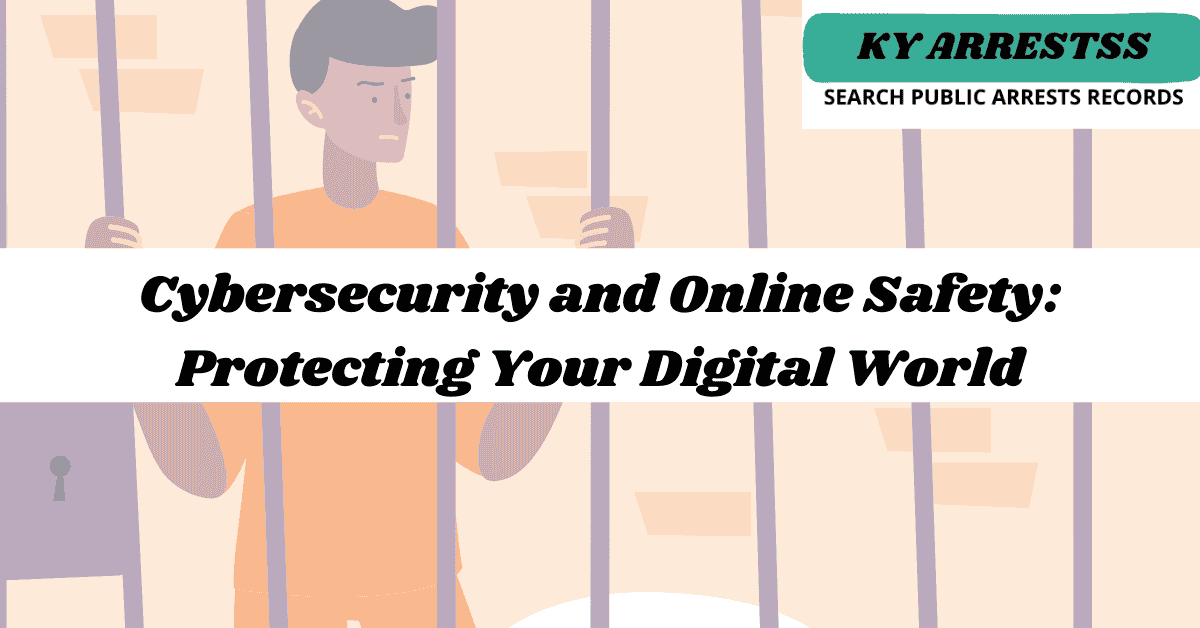Cybersecurity and Online Safety: Protecting Your Digital World
In today’s interconnected world, where technology plays an integral role in our daily lives, ensuring cybersecurity and online safety has become paramount. From personal information to financial transactions, our digital footprint encompasses a vast array of sensitive data that is susceptible to cyber threats. In this comprehensive guide, we’ll delve into the essentials of cybersecurity and provide practical tips to safeguard your digital world.
Understanding Cyber Threats
Cyber threats come in various forms, ranging from malware and phishing attacks to ransomware and data breaches. Malware, short for malicious software, is designed to infiltrate and damage computer systems, while phishing involves deceiving individuals into divulging confidential information. Ransomware encrypts files and demands payment for their release, while data breaches compromise sensitive data, leading to identity theft and financial loss.
Securing Your Devices
Securing your devices is the first line of defense against cyber threats. Whether it’s your computer, smartphone, or tablet, implementing robust security measures is essential. This includes installing antivirus software, enabling firewalls, and regularly updating your operating system and applications to patch vulnerabilities.
Creating Strong Passwords
Passwords act as the gatekeepers to your digital accounts, making it crucial to create strong and unique passwords for each account. Avoid using easily guessable passwords like “123456” or “password” and opt for a combination of uppercase and lowercase letters, numbers, and special characters. Consider using a reputable password manager to securely store and manage your passwords.
Using Multi-Factor Authentication
Multi-factor authentication adds an extra layer of security by requiring users to provide multiple forms of verification before granting access to an account. This typically involves something you know (e.g., a password), something you have (e.g., a smartphone), or something you are (e.g., a fingerprint). Enabling multi-factor authentication wherever possible significantly reduces the risk of unauthorized access to your accounts.
Securing Your Network
Your home and public networks are prime targets for cyber attacks, making network security a critical aspect of cybersecurity. Secure your home Wi-Fi network with a strong password and encryption, and avoid connecting to unsecured public Wi-Fi networks, which are often hotbeds for cybercriminal activity.
Avoiding Phishing Attacks
Phishing attacks continue to be a prevalent threat, with cybercriminals employing increasingly sophisticated tactics to deceive unsuspecting victims. Be wary of unsolicited emails, messages, or calls requesting sensitive information and never click on suspicious links or download attachments from unknown sources. When in doubt, verify the legitimacy of the communication directly with the purported sender.
Securing Your Online Accounts
Your email, social media, and other online accounts contain a wealth of personal information, making them lucrative targets for cybercriminals. Strengthen the security of your online accounts by enabling two-factor authentication, using strong and unique passwords, and regularly monitoring for any unusual activity or unauthorized access.
Updating Software Regularly
Software updates often include patches for security vulnerabilities identified by developers, making regular updates essential for mitigating potential risks. Enable automatic updates for your operating system, applications, and antivirus software to ensure you’re always protected against the latest threats.
Using Antivirus Software
Antivirus software serves as a crucial defense mechanism against malware and other malicious threats. Choose a reputable antivirus solution and keep it updated to detect and remove any potential threats lurking on your devices. Perform regular scans to proactively identify and eliminate any malware infections.
Backing Up Your Data
Data loss can occur due to various factors, including hardware failure, malware infections, or accidental deletion. Protect your valuable data by regularly backing it up to an external hard drive, cloud storage service, or a combination of both. In the event of a data breach or ransomware attack, having backups ensures you can quickly restore your files without succumbing to extortion demands.
Being Cautious with Public Wi-Fi
Public Wi-Fi networks pose significant security risks, as they are often unencrypted and susceptible to interception by cybercriminals. Exercise caution when using public Wi-Fi, avoid accessing sensitive information or conducting financial transactions, and consider using a virtual private network (VPN) for added security.
Educating Yourself and Others
Cybersecurity education is key to staying one step ahead of cyber threats. Stay informed about the latest trends and best practices in cybersecurity, and educate others, including family members, colleagues, and friends, about the importance of online safety and security.
Monitoring Your Online Presence
Your online presence leaves a digital trail that can be exploited by cybercriminals for malicious purposes. Regularly monitor your online accounts and profiles for any signs of unauthorized activity or identity theft. Take proactive steps to secure your privacy settings and limit the amount of personal information you share online.
FAQs
What is cybersecurity and why is it important?
Cybersecurity refers to the practice of protecting computers, networks, and data from digital attacks. It’s crucial because cyber threats are constantly evolving, and breaches can lead to financial loss, identity theft, and compromised privacy. By implementing robust cybersecurity measures, individuals and organizations can safeguard their digital assets.
What are common cyber threats to be aware of?
Common cyber threats include malware, phishing scams, ransomware, and identity theft. Malware, such as viruses and spyware, can infect devices and steal sensitive information. Phishing scams trick users into revealing personal data, while ransomware encrypts files and demands payment for their release. Being aware of these threats helps users recognize and avoid potential dangers online.
How can I enhance my online safety?
You can enhance your online safety by using strong, unique passwords for each account, enabling two-factor authentication whenever possible, and keeping your software and devices up to date with the latest security patches. Additionally, be cautious when clicking on links or downloading attachments from unknown sources, and regularly back up your data to prevent loss in case of a cyber attack.
What should I do if I suspect a security breach?
If you suspect a security breach, immediately disconnect the affected device from the internet to prevent further damage. Then, run a thorough antivirus scan to detect and remove any malicious software. Change passwords for compromised accounts and notify relevant parties, such as your bank or IT department, if necessary. Finally, consider reporting the incident to the appropriate authorities or seeking professional assistance to mitigate the impact of the breach.
How can I stay informed about cybersecurity best practices?
Stay informed about cybersecurity best practices by following reputable cybersecurity blogs, attending webinars or workshops, and participating in online forums dedicated to cybersecurity awareness. Additionally, consider taking online courses or obtaining certifications in cybersecurity to deepen your understanding and expertise in this field. By staying proactive and educated, you can better protect yourself and your digital assets from cyber threats.
Conclusion
In an increasingly digitized world, prioritizing cybersecurity and online safety is essential for protecting your digital world from evolving cyber threats. By implementing robust security measures, staying vigilant against potential risks, and staying informed about the latest cybersecurity trends, you can safeguard your personal information and enjoy a safer online experience. Remember, the key to cybersecurity is diligence and proactive risk management. Stay safe, stay secure, and protect your digital world.







